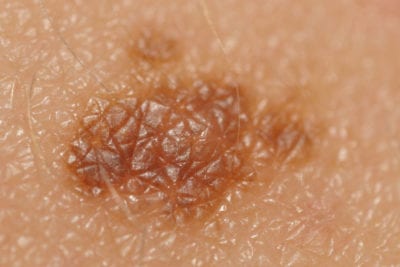Skin Cancer Examinations
What is Skin Cancer?
 Skin cancer is the most common form of cancer in the United States. Skin cancers can be found on any part of the body. Anyone can get skin cancer, but it is more common in people who:
Skin cancer is the most common form of cancer in the United States. Skin cancers can be found on any part of the body. Anyone can get skin cancer, but it is more common in people who:
- Spend a lot of time in the sun or have been sunburned
- Have light colored skin or eyes
- Have a family member with skin cancer
- Are over the age of 50
- Use tanning lights or booths
The most common type of skin cancer and the least dangerous is basal cell carcinoma. It is slow growing and rarely spreads (metastasizes) beyond its primary site near the eyes). It generally is not a problem to treat if diagnosed and treated early.
The second most common form of skin cancer is squamous cell carcinoma. The main symptom is a growing bump that may have a rough, scaly surface and flat reddish patches. It is important to diagnose and treat this type of skin cancer early, as they can become life-threatening.
Malignant melanoma is the least common form of skin cancer but the most deadly and dangerous. If discovered early the total cure rate is high. However, if left untreated, malignant melanoma may spread and is often deadly.
Moles are growths on the skin. While most pose no danger, some may develop into malignant melanoma.
Actinic keratosis is a small, rough, raised area on your skin usually found on areas exposed to the sun, and sometimes morph into squamous cell cancer.
It is important to perform regular self-examinations. Lesions may first appear as a small bump or nodule. They can be pitted, smooth and shiny, crusty or waxy on the surface. A skin growth may increase in size. The cancer might also change color, increase in size or thickness, and have an irregular outline. If you see any unusual changes call ClearlyDerm for a skin examination.
Our ClearlyDerm skin cancer dermatologists surgically remove most lesions. In many cases, this minor surgery is often performed in our office, using just local anesthesia. Also, curettage and desiccation may be performed depending on the location, size and type of the skin cancer. In these procedures, the cancer is scraped out with an electric current to control bleeding and remove any remaining cancer cells.
In addition, treatment of skin cancers may include radiation therapy, cryosurgery, and Mohs micrographic surgery. Whether you see unusual skin lesions or not, it is always important to see a ClearlyDerm professional for an annual skin cancer examination. This involves assessing the entire body, from head to toe. During your visit, you can expect our skin cancer dermatologists to show you how to conduct your own self-screenings throughout the year and provide you with important information on how to reduce your chances of developing skin cancer.
So, what are you waiting for? Give yourself the peace of mind, and schedule your next skin cancer examination today in our Boca Raton, Boynton Beach or Fort Lauderdale office. We look forward to meeting you!






